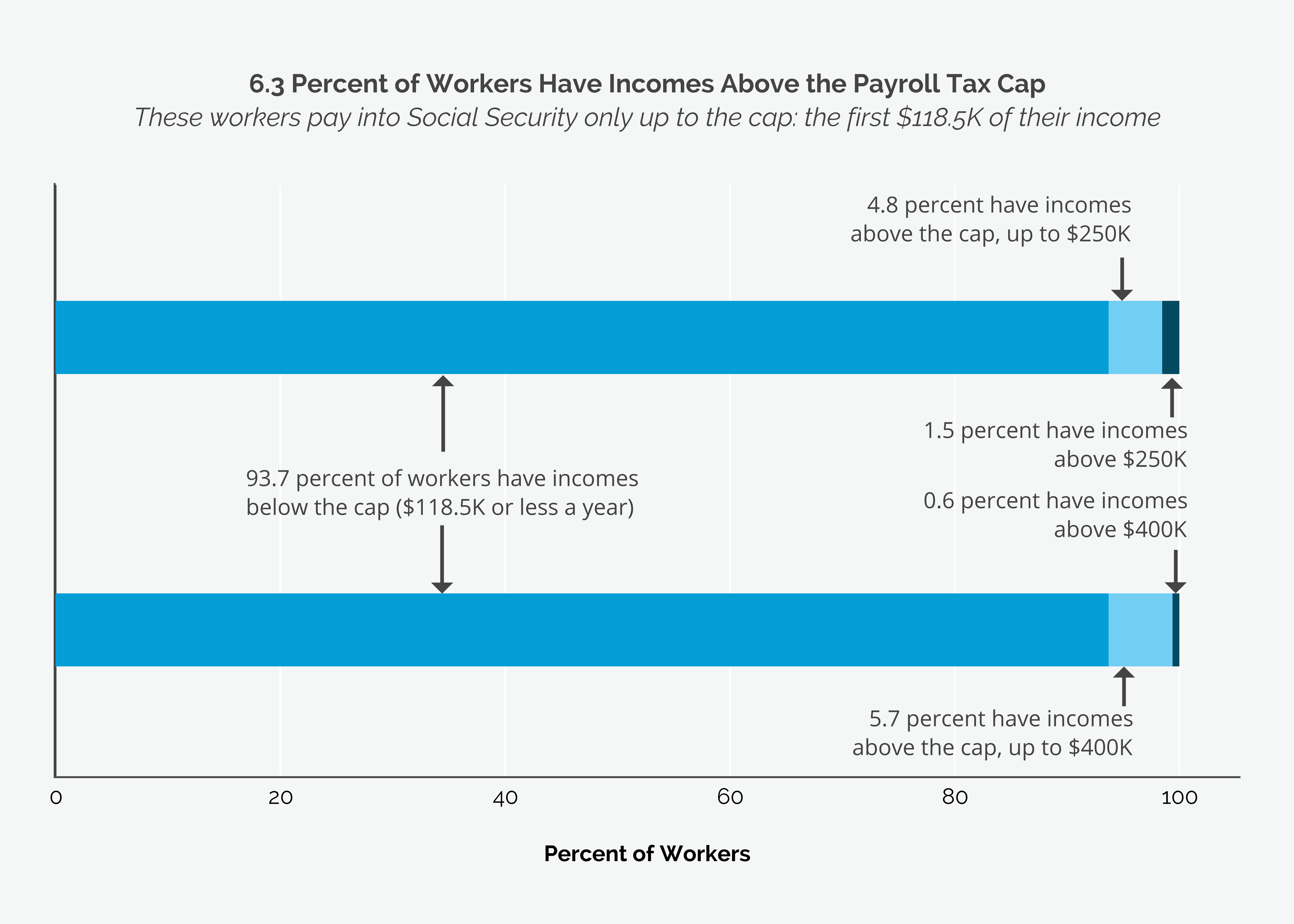February 03, 2016
Many Americans are not aware that, because there’s a cap on the amount of earnings that are subject to Social Security payroll tax, the highest-income earners among us pay a lower rate than the rest of us. For 2016, that cap is set at $118,500 per year, the same level as in 2015. (In almost all prior years, the cap increased annually with inflation, but lower gas prices were a major factor in holding the relevant inflation measure flat last year.)
That means that people who make a quarter of a million dollars per year pay this tax on less than half of their wages. Those who make a million dollars annually pay the tax on less than one-eighth of their earnings. In other words, the vast majority of us who make less than the cap pay a Social Security tax rate that’s more than eight times that of millionaires.
In 2015, several members of Congress introduced bills to shore up Social Security’s finances by raising the tax rate on the highest-wage earners, bringing their rate either closer to or equal to that paid by the rest of us. The proposals that remove the payroll tax cap entirely are estimated by Social Security’s Chief Actuary to reduce the program’s long-term funding shortfall between 70 and 80 percent. Other bills apply the tax to earnings above $250,000 or $400,000 per year, which are estimated to eliminate anywhere between one-ninth and four-fifths of the gap, depending on how they are phased in.
The figure below, and the tables available at the bottom, update prior CEPR issue briefs to show how many workers would be affected by eliminating or raising the cap. It turns out that the top 6.3 percent of earners (less than 1 in 15) would pay more if the cap were scrapped. If the tax were applied only to income above $250,000 or $400,000 per year, then only the top 1.5 percent (1 in 67) and 0.6 percent (1 in 167), respectively, would pay more.
The share of workers affected ranges widely when we look at workers according to gender, race or ethnicity, age, or state of residence. For example, only the highest-earning 1 in 30 female workers (3.3 percent) would pay more if the cap were removed. And only top 1 in 167 (0.6 percent) and 1 in 500 (0.2 percent) would be affected if incomes over $250,000 and $400,000, respectively, were subject to the tax.
The story for black and Latino working people is similar. If the cap were lifted entirely, the highest-paid 2.4 percent of black and 2.6 percent of Latino workers would be affected. If the tax were applied to earnings above $250,000, then the top 1 in 250 black (0.4 percent) and 1 in 200 (0.5 percent) of Latino wage earners would pay more. At $400,000, only the highest-earning 1 in 500 (0.2 percent) black or Latino workers would be affected.
The last time major changes were made to the program (in 1983), the cap was set to apply the Social Security tax to 90 percent of all earnings. But since wages have grown faster for high-earners than the rest of us, the share of earnings covered by Social Security has continually dropped. It hit a new low of only 81 percent in 2015.







